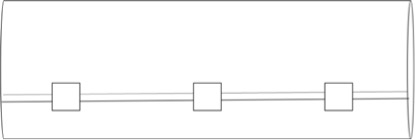Have you ever wondered how many stars you can see in the night sky? Did you know that the number you can see depends on where you are? This is because of something called light pollution. The more light pollution from human-made lights, the fewer stars you will see.
Have a go at counting the number of stars visible where you are. Then share your results with us and we'll add them to our light pollution map!
You'll need to do this activity outside on a clear, dark night!
By the end of this activity you will:
- have completed a scientific investigation
- have used some of your maths skills
- have shared your results
To complete this activity you will need:
- 1 piece of A4 paper
- sticky tape
- a copy of the results sheet
- something to write with
- a clear, dark night!

Credit: Need-Less
Have a go!
Don't worry, you don't have to count every star you can see! You will use a paper tube to make observations of several small areas of the sky. You will count the number of stars you see in each area. Then you will use maths to work out the total number of visible stars. Because you are working out the total from several smaller samples, your total will not be completely accurate but it will be a good estimate.
Remember, make sure to do this activity on a clear, dark night when there are no (or very few) clouds!
Follow the instructions below to complete the activity. You can also download and print the instructions if you prefer.
Step 1: Roll your piece of A4 paper lengthways into a tube, trying to keep the overlap as small as possible.

Step 2: Secure your paper tube with the sticky tape.

Step 3: Take your tube outside and let your eyes adjust to the dark. This involves not looking at any light sources, and simply standing in the darkness for a few minutes. This allows your eyes to become more sensitive to the light and means you can see more stars.
Step 4: Look through your tube and select a piece of the night sky that is free of any clouds. Keep the tube very still and count how many stars you can see through the tube.
Step 5: Record the number of stars you counted on the results sheet.
Step 6: Repeat steps 3, 4 and 5 for 4 more different parts of the night sky. Remember, to select a part of the sky that is free of clouds and to keep the tube as still as you can.
Step 7: Add your 5 results together. Record your sum total on the results sheet.
Step 8: Enter your total in the box and press the 'calculate button'. The website will work out how many stars were visible across the entire night sky where you were. Scroll to the bottom of the page to see your results.
Your Results

